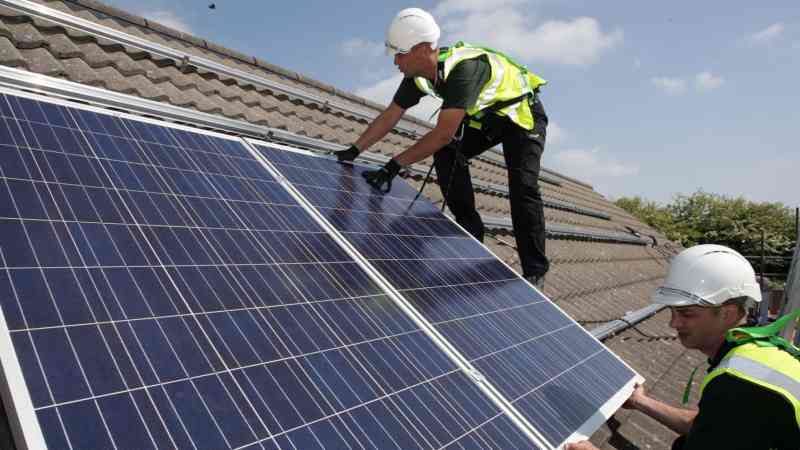Say goodbye to free markets — buried by Washington
‘The US economy is in good shape.” That simple declarative sentence by Jerome Powell, chairman of the Federal Reserve Board, had different meanings for Kamala Harris and Donald Trump. For Harris, it provided an opportunity for President Biden to claim the administration’s economic policies have provided consumers and businesses with “ confidence … immense opportunities”. For Donald Trump, it “shows the economy is very bad …. it was a big cut”.
The 50-basis-point cut brings the benchmark rate down to 4.75 to 5 per cent from the 5.25 to 5.5 per cent it reached after 11 increases since 2022. Nine times Powell used the term “recalibrate” to characterise the policymakers’ decision to cut the Fed’s benchmark interest for the first time in more than four years.
A “jumbo”, stimulative rate cut — 0.50 rather than 0.25 — at a time when the economy is in good shape and the Fed has yet to get inflation down to its 2 per cent target shows that the Fed now knows it can rein in inflation, but is less certain that it can reverse a rise in the unemployment rate, which has already risen from 3.7 to 4.2 per cent this year. The Fed expects it to rise to a still-historically low 4.4 per cent by the last quarter of next year, when the economy will be growing by 2 per cent and inflation has dropped to 2.1 per cent. View the rate cut as insuring, says Powell, “strength in the labour market can be maintained”, a pre-emptive strike to prevent a crash instead of the fabled soft landing.
The Fed plans to keep the economy in good shape by moving as fast or as slowly as incoming data suggests to be appropriate: “We are not on a pre-set course.” Unfortunately, the chance that we will be living in an economy anything like the one the Fed is forecasting is minimal.
Powell says the Fed pays no attention to the political state of play when shaping its outlook for the economy. I believe him. But ignoring the political situation can’t make it go away. It is the 11-ton, floppy-eared, trunked and tusked mammal in the room, preparing to stomp on the Fed forecasts. It is clearly visible to voters, 81 per cent of whom say the economy will be a very important determinant of how they vote.
Both Harris and Trump know that, but see no profit in stanching the flow of red ink. Harris plans to spend, Trump to cut taxes. Harris would dish dosh to students who don’t want to repay their debts; children and new parents; purchasers of electric vehicles; first-time homebuyers; ethnic groups with historic grievances; companies building stuff of which the Democrats approve.
Trump prefers to de-tax. Extend the expiring tax cuts he engineered in 2017, cut taxes of corporations locating in the US, increase tax breaks for kids and their parents, and for rich residents of high-tax states, no income tax on tips, or on social security benefits, or on overtime pay.
No matter which candidate wins, we are headed for massive increases in deficits and the national debt. The deficit is already up 7 per cent this year to $2 trillion, six per cent of GDP. The national debt will rise enough to make the current $35.4 trillion look like the result of decades of austerity. The dollar will continue its decline, making imported goods more expensive. Interest rates will rise, increasing the share of the government revenue devoted to paying the cost of its borrowings. Tariffs will exacerbate the upward pressure on prices. An inflation rate of 2.1 per cent in those circumstances seems unlikely.
There is worse. The old economy ain’t what it used to be. Before he was unceremoniously consigned to the scrapheap of history by his colleagues, Joe Biden changed the economy from a market economy to one in which the government plays a major role in picking winners and losers. If some power had the gift to give us of being able to see ourselves as others see us, we would understand the magnitude of the change.
Mario Draghi, who played the role of central banker for the EU with success and style, sees the new US economy clearly. He has called for the EU to “move closer to the US example in terms of productivity growth and innovation”. Not your grandfather’s America of daring innovators driving up living standards, relatively but not totally free of government interference, but Biden’s America, where the Inflation Reduction Act transfers $500 million from taxpayers to bureaucrats to spend increasing American innovation and industrial productivity, where industrial policy is replacing free markets. Draghi wants EU member states to adopt the new US model to the tune of €800 billion a year to fill a private-sector investment gap. The US remains a model, but of a different sort.
Add to Democrats’ industrial policy Trump’s crass populism — he now plans to cap credit-card interest rates at 10 per cent, less than half their current level — and it is free-markets RIP, funeral to be held in Washington.
Irwin Stelzer is a business adviser




Post Comment